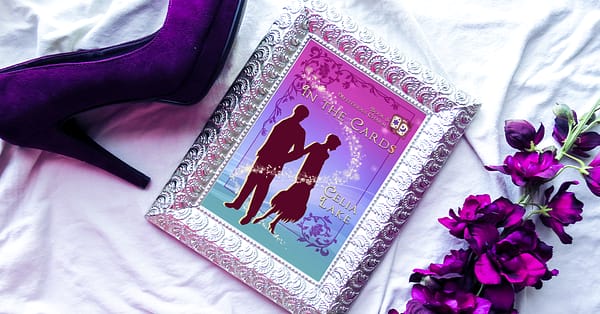
In The Cards takes place largely over the course of a week on a remote island off the coast of Cornwall. It has references to a number of aspects of the 1920s, everything from the after-effects of the War (both in terms of injury and in terms of love and consequences) to Tarot, chronic illness to the way we build networks in our lives.
Locked room murder mysteries
I love a locked-room murder mystery, and they’re certainly a staple of the mystery genre (and of Golden Age mysteries, in particular.)
Unsurprisingly, they’re also rather tricky to write! My editor and I went back and forth on how to make the plot of In The Cards come out right, and how to layer in the available clues in a useful way.
The other trick for this book is having three point of view characters, all of whom knew they didn’t do it. (And who can confirm that to each other fairly early on after the murder.) This is rather different than many mystery novels, where you’re only dealing with a single point of view, and often that of a detective, amateur or otherwise.
Tarot
As you may or may not know, Tarot has a long and complicated history, some of which we’re not entirely sure of. What we do know is that by the 16th century, various decks were circulating around Europe. Some were used for playing card games (notably tarrochi, which is played in the book, and was still reasonably common in Europe in the period.)
The decks usually involve four suits (like a modern playing card deck), with four court cards in each suite (traditionally something like page, knight, queen, and king) as part of the Minor Arcana. The Major Arcana are an additional 22 cards with more esoteric leanings, depicting archetypal concepts like the Lovers, Death, the Tower, or the Star.
Notably, most decks up until the introduction of Rider-Waite-Smith (Pamela Coleman Smith was the actual artist) did not include images for the pip cards (the ace to 10 in the four suits).
When I started looking at historical Tarot decks, none of them quite had the symbology I wanted . Especially for Albion, where Christianity is present but not as central in the magical community as it is in the historical community. Again, one of these days, there will be a book more about that, I’m sure.
I therefore created the Howard Tarot (yes, the same Howards as Katherine Howard: it’s historically a huge family, who were on basically every possible side of ever difference in British history for hundreds of years. That’s very useful for my purposes.)
I’ve described some cards, and have ideas for a number of others, and I’m sure the deck will show up somewhere else eventually. (If you happen to be or know an artist who might be interested in a commission of a few cards, I would love to talk. Get in touch through the contact form, please!)
You’ll notice a few changes in labels in the Howard deck – for example, the court cards are Child, Apprentice, Lady, and Lord, and there are a few differences in the Major Arcana, as well. (Notably, “The Devil” in most decks is “Umbra”.
Tuberculosis
One other key in this book is the experience Laura has with tuberculosis. Here’s the thing: statistically speaking, tuberculosis should be looming all over every work in the 19th and pre-antibiotics 20th century, as well as before that. (And to be fair, if you read vampire fiction, there it is.)
There are times in this period when it was the cause of 1 in 10 deaths, enver mind the number of lives permanently altered by it. Many people did survive, but only after extended periods away from family and loved ones (and a very strict regimen of treatment, mostly involving fresh air, not moving at all, and sometimes painful surgeries.)
Laura talks at several points in the book about what this did to her instincts, about needing to please people in order to not have unpleasant experiences while she was isolated. (Something many people with chronic health issues and disabilities still experience today.)
If you’d like to read more of the history, Spitting Blood: The History of Tuberculosis by Helen Bynum is a great starting place, with a solid overview both of the medical aspects and of social responses and implications. There’s also a brand new history (out on February 1, 2022) Phantom Plague: How Tuberculosis Shaped History by Vidya Krishnan that I’ve just requested from my library.
Views of relationships
One of the things I was thinking of in this book is the different forms of relationship. (If you want a polyamorous romance from me, check out Casting Nastutiums, collected in Winter’s Charms, In The Cards is not that.)
But it is about how we have friends and relationships and connections to other people in a variety of ways. And about how some people can be wonderful friends to us, but not good as a romantic (or sexual) partner. Don’t worry, we’re getting more time with Galen (and some time with Laura and Martin) in the upcoming Point By Point, out in May 2022. We’re also getting some more time with Julius there too.
If any of this sounds intriguing, check out In The Cards.
